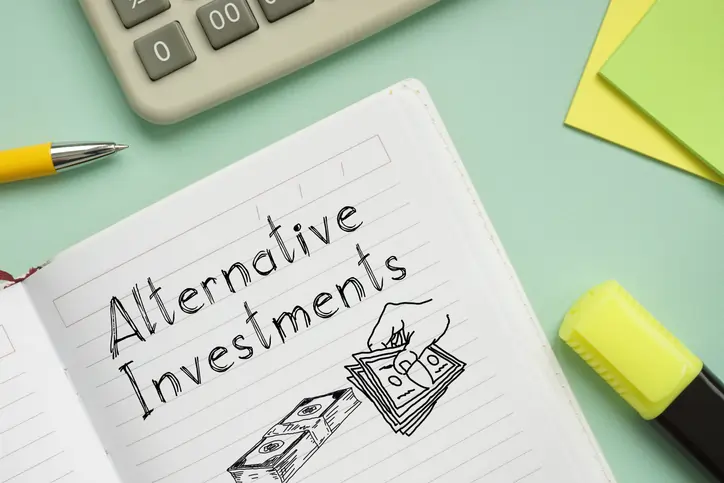
By James Battiston
When it comes to investing, diversification is key. But diversification doesn’t mean relying solely on traditional assets like stocks, bonds, and cash.
Alternative investments give you a more balanced portfolio – one that can lead to greater financial gain and stability. Like all forms of investments, alternative assets aren’t without their risks, and the more knowledgeable you are, the more likely you’ll benefit.
What is an alternative investment?
Alternative investments are those that fall outside of the traditional asset classes, typically traded using investment apps. Things like private equity, hedge funds, real estate, art, wine, collectibles, and more are all considered alternative assets. Generally, these assets aren’t available to investors on the stock exchange.
Because these assets have low correlation with the stock and bond market, they can provide a cushion during times when the market is more volatile. In most cases, to access them you have to use specialized alternative investment platforms.
Types of alternative investments
Just what can be classified as an alternative investment, anyway? There’s a lot of gray area when talking about alternative assets. Despite this, there are some areas that are generally agreed upon.
Hedge funds: these are private funds made up of money from private investors or limited partners. These funds may invest borrowed money as a way to gain greater returns. This practice is also known as leveraged trading, and while it can be profitable, it’s generally a riskier practice.
Equity crowdfunding: For businesses, raising capital without taking out a loan seems like a win-win. This model is when a large number of investors use a crowdfunding platform (like AngelList or Fundable) to contribute to a business. This gives them a stake in the company, and a chance to grow their own profit.
Private debt: This is when you purchase an existing company’s debts that are held by private companies. If the company moves out of the red and into the black, you stand the chance of profiting along with them.
Commodities: These are basic goods, natural materials, and agricultural products. Things like Sugar, wheat, crude oil, gasoline, copper, gold, and other precious metals all fall in this category. Futures contracts allow you to invest in commodities by letting you buy an asset for a set price, then sell it for a predetermined amount at a future date.
Real estate: If you own a home, you’re building equity, and already participating in an alternative investment. There are a lot of other ways you can start to invest in real estate as well, though. Online platforms have made it easy to invest in rental properties, farmland, and REIT.
Collectibles: Those comic books and sports cards in your closet act as a way to diversify your portfolio, and potentially provide higher returns than other traditional investments. Things like artwork, wine, and stamps are all ways you can get involved in collectible investing. There are numerous online platforms that can help you get started, whether you want to purchase an item outright or participate in fractional investing.
Cryptocurrency: Cryptocurrency is a digital asset that trades on cryptocurrency exchanges. Over five years, the popular cryptocurrency Bitcoin has increased in value by 3%, despite having some turbulent times.
Because alternative investments aren’t always publicly traded, you might have to go through a money manager or a private firm to gain access to them.
There are also a number of online brokerages and platforms where you can start investing in these assets. Things like cryptocurrency can be acquired through an online crypto-exchange, while you can buy shares of commodities through exchange-traded funds (ETFs).
No matter what you choose to invest in, remember that no form of investing isn’t without its risk. While alternative investments aren’t correlated to the stock market, their value still fluctuates. Diversifying your investments across both traditional and alternative investments is your best-bet for some form of security – though when it comes to investing, nothing is foolproof.
Carefully research any area you might be interested in investing in, and know the possible risks involved.


